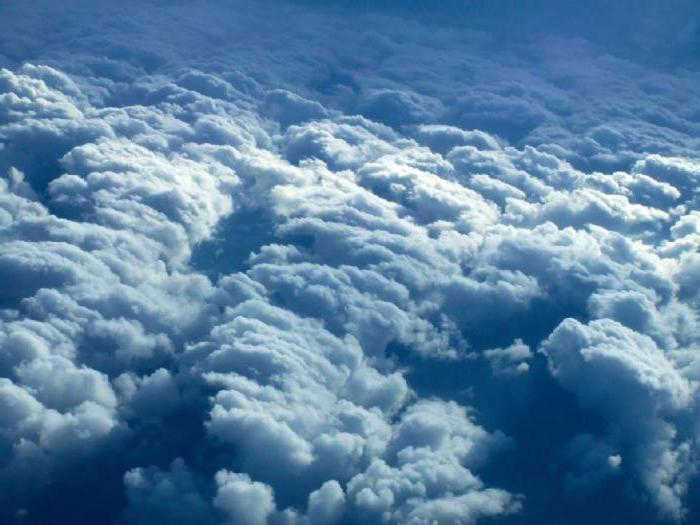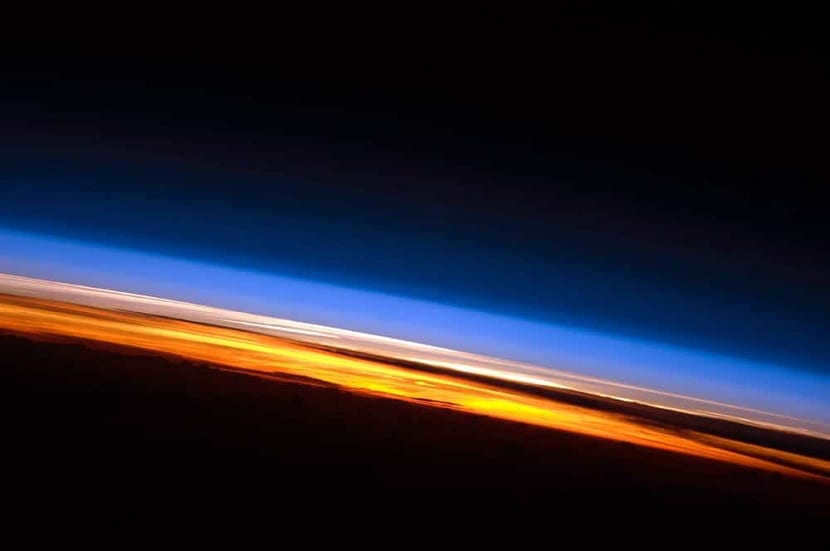
All meteorological phenomena and various weather events take place within the troposphere, which is just one of the layers of the atmosphere. The troposphere, located 10 to 16 kilometers above the Earth’s surface, is the region in which we reside. Above it lies the stratosphere. The point where both layers are defined is known as the tropopause. This article will delve into the tropopause and its distinctive characteristics between the separated layers, which contribute to climate change.
Discover all there is to know about the tropopause in this informative post.
Main features

This is the region that separates the troposphere from the stratosphere. It is worth mentioning that the troposphere is the area where various types of clouds and precipitation occur. Above this layer, the atmosphere undergoes a complete transformation in terms of its characteristics, gas composition, and other factors. One prominent feature of the stratosphere is the presence of the ozone layer, which is responsible for shielding us from the harmful rays of the sun.
The temperature gradient of the thermal inversion, which is the increase in temperature with altitude, is 0.2 degrees per 100 meters. It is important to note that the tropopause, contrary to popular belief, is not a continuous layer. Instead, there are discontinuities in both hemispheres as we move into the mid-latitudes and tropics. Interestingly, these discontinuities align with the paths taken by the jet stream.
The presence of these holes in the tropopause allows ozone from the stratosphere and dry air to enter the troposphere. The altitude at which the tropopause is found decreases from the equator to the poles, while the temperature actually increases with altitude.
Classification of tropopause based on altitude and latitude
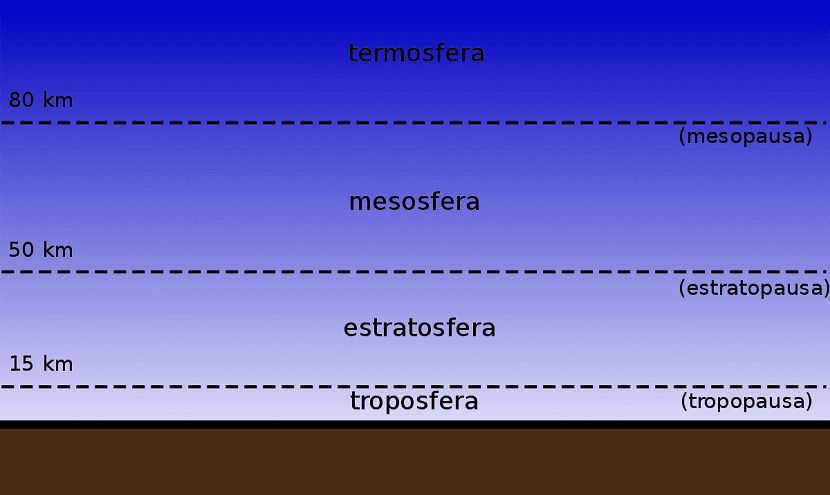
The height of the tropopause can vary depending on meteorological and weather conditions. When there are anticyclones in the lower layers, the tropopause tends to be higher, while it is lower during depressions or storms. Additionally, the temperature of the tropopause depends on the latitude. Some regions experience temperatures as low as -85°C, while others reach lows of -45°C.
As a result, there are three different types of tropopause, each corresponding to different geographical areas, latitudes, and altitudes.
- Type 1 or normal: This type is characterized by predominantly stationary conditions in the troposphere, with no significant advection of heat or cold.
- Choose Type 3 or S. This type is also known as a sunken one. It occurs when cold advection takes place in the upper troposphere, while the rest forms due to areas of low pressure in the lower layers.
Significance
Despite its seemingly insignificant nature, the boundary between the two atmospheric layers plays a crucial role in sustaining life on Earth. Firstly, it provides stability at higher altitudes, giving rise to the well-known perispheric clouds.
It acts as a water reservoir as it has the capacity to hold a substantial amount of water vapor, particularly from tropical regions. The substances present in this boundary contribute to a better understanding of the impacts of climate change and its implications for our planet. It is through such understanding that mitigation strategies can be devised to counteract the most detrimental effects caused by this phenomenon.
When clouds are carried by convection currents to the tropopause, they reach a point where they can no longer rise and are essentially halted, as if they are hitting an invisible barrier. Prevent the clouds from ascending, as they exhibit the same density as the air surrounding them. Conversely, below the tropopause, the air possesses buoyancy that enables it to freely move in an upward and downward fashion. The most intense storms in the troposphere propel clouds above the tropopause.
Phenomena resulting from the tropopause
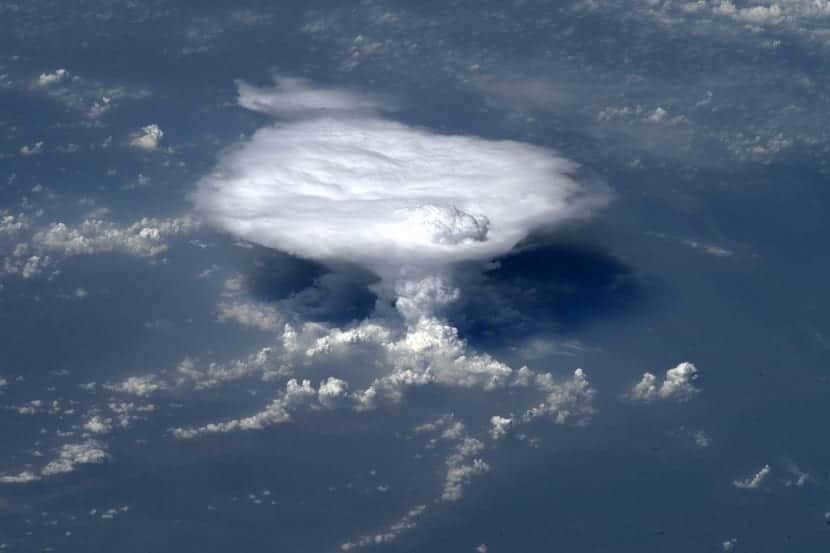
There are several phenomena that take place as a result of the presence of this boundary. Let’s examine them individually.
Firstly, as the concentration of CO2 rises, it leads to an increase in the number of collisions between molecules and other gases like nitrogen. These collisions result in the absorption of kinetic energy, giving rise to infrared radiation. Infrared radiation is a form of electromagnetic radiation with a long wavelength, which in turn leads to an increase in temperature.
The occurrence of the tropopause leads to a second phenomenon. This situation arises when the concentration of CO2 rises. In this scenario, it absorbs the heat emitted by the Earth, causing an increase in temperature in the lower atmosphere. Consequently, radiation reaches the upper layers.
I trust that this information will enhance your understanding of the tropopause.
The content of this article adheres to our editorial ethics guidelines. If you spot an error, please click here.
Full article path: Network Meteorology ” Meteorology ” Science ” Tropopause
When we gaze at the sky, it’s difficult to fathom the enormity of the events occurring there.
It is difficult to fathom that we exist within the confines of Earth’s atmosphere on a daily basis. These crucial details regarding the troposphere outline its distinctive features, how it sets itself apart from other atmospheric layers, and why the sustenance of life on our planet is of utmost importance.
By acquainting yourself with these facts, you will gain a comprehensive understanding of the troposphere and its defining characteristics, thereby acquiring all the necessary knowledge concerning Earth’s nearest atmospheric layer.
If you find yourself yearning for more information about our planet and the various scientific phenomena it encompasses, feel free to explore our collection of water conservation facts or delve into the fascinating realm of the asthenosphere.
What is the troposphere?
The troposphere is the layer of the atmosphere closest to the Earth’s surface. It is an essential part of our environment as it plays a crucial role in supporting life on Earth.
Similar to how the ground is divided into various layers, the atmosphere is also divided into different layers of gases. These layers work together to maintain the balance and stability of our planet.
The troposphere, being the lowest layer of the atmosphere, is the layer we are most familiar with. It extends from the Earth’s surface up to an altitude of about 8 to 14 kilometers, depending on the location.
One of the primary functions of the troposphere is to regulate the Earth’s climate. It does this by trapping and circulating heat, which helps maintain a relatively stable temperature on our planet. This temperature regulation is vital for the survival and growth of plants and animals.
Additionally, the troposphere is where weather phenomena occur. It is the layer where clouds form, precipitation falls, and most of the Earth’s weather events take place. This makes the troposphere a crucial component in studying and understanding weather patterns.
7. The troposphere is at its thinnest in the polar regions of the Earth and at its thickest in the warmest regions of the planet. Therefore, if you were to visit the North and South Poles, you would find the thinnest layer of the troposphere there.
8. Within the troposphere, you will find clouds and the air that we breathe.
9. The troposphere contains three-quarters of the total mass of the atmosphere.
10. The majority of the weather phenomena we experience occur within the troposphere.
11. The troposphere is where most of the water vapor in the atmosphere is located, resulting in the formation of clouds.
12. As an airplane ascends to higher altitudes, both air pressure and density decrease. Consequently, airplanes flying at the highest altitudes need to have increased pressure.
13. The air in the troposphere is coldest when it is farthest from the ground and warmest when it is closest.
14. In the troposphere, the air is composed of 21% oxygen and 78% nitrogen, while the remaining 1% consists of a mixture of carbon dioxide, water vapor, and argon.
15. While carbon dioxide is only a small component of tropospheric gas, it plays a role in determining whether the Earth will experience warmth or coldness, and it could potentially lead to an ice age.
16. Within the layers of the atmosphere, the troposphere holds 99% of the total water vapor.
17. The upper boundary of the troposphere is defined by a layer of air known as the tropopause, which separates it from the adjacent layer of the atmosphere, the stratosphere.

Interesting facts about the troposphere
These intriguing pieces of information about the troposphere are among our favorites and provide a relatable context for our everyday lives.
18. Every time a cloud catches your eye, a bird soars through the sky, or a gentle breeze caresses your skin, you are experiencing the wonders of the troposphere.
19. The height of the troposphere varies depending on the time of day, latitude, and season.
20. At sea level, the air pressure reaches its maximum. As it ascends, the pressure gradually decreases.
21. Urban areas often suffer from high levels of smog in the troposphere. This smog, caused by pollutants emitted by cars and factories, can impair visibility and irritate the throat and eyes.
22. The term troposphere is derived from the Greek word “tropos,” meaning “change.” This is because the composition of atmospheric gases undergoes constant fluctuations due to weather conditions.
23. The heat within the tropospheric layer is not directly sourced from the sun, but rather from the sun’s radiation warming the ocean and land, which in turn radiate heat into the atmosphere.
24. Only 10% of the ozone is found in the troposphere, making it the layer with the lowest ozone concentration.
25. When sunlight enters the atmosphere, a portion of it is immediately reflected back into space.
26. The lowest temperature that the troposphere can reach is -110 F (-80 C).
27. The majority of dust particles present in Earth’s atmosphere are located within the troposphere.
28. The troposphere is characterized by its impermanence, both in terms of time and space.


What is the significance of the troposphere?
The troposphere, being one of the five layers of the atmosphere, plays a crucial role in sustaining human life. Here are some reasons why it is considered the most important layer:
29. Climate and meteorology are greatly influenced by tropospheric processes such as the greenhouse effect and the water cycle.
30. The troposphere regulates the temperature of our planet, ensuring a relatively stable environment for human survival.
31. Changes in the composition of the troposphere can affect the quality of our air, posing risks to both human health and vegetation.
32. The troposphere plays a crucial role in sustaining liquid water on Earth.
33. It is within the troposphere that the water cycle, which enables plant growth, takes place.
34. The study of the troposphere holds great significance for human life as it is the layer where we breathe.
35. In addition to providing vital oxygen for our survival, the troposphere also shields us from harmful ultraviolet radiation emitted by the sun.
36. Due to the troposphere’s uneven heating of the Earth’s surface, convection currents are generated, resulting in the movement of heat and moisture across the globe in the form of winds.
What are the factors that endanger the troposphere?
Preserving our planet, including its atmosphere, is of utmost importance.
37. The troposphere, being in direct contact with the Earth’s surface, is highly susceptible to various phenomena occurring at this level, such as photosynthesis, ocean evaporation, and human activities.
38. The concentration of carbon dioxide in the troposphere has nearly doubled since 1900.
39. As a result of the increased carbon dioxide levels, a portion of the Earth’s heat becomes trapped near the surface instead of being released into space.
At Kidadl, we have meticulously curated a collection of fascinating facts for the entire family to enjoy! If you found our facts about the troposphere interesting, why not explore these incredible fun facts about the geological law of superposition, or these mind-boggling facts about the mesosphere.
When we gaze up at the sky, it can be difficult to comprehend the sheer scale of what is happening up there.
It’s truly remarkable to think that we are constantly surrounded by Earth’s atmosphere. These essential facts about the troposphere outline its characteristics, how it distinguishes itself from other layers of the atmosphere, and why it is crucial for life on earth.
These facts will provide you with a comprehensive overview of the troposphere and its defining features, ensuring that you have all the information you need about Earth’s closest atmospheric layer.
If you lack sufficient knowledge about our planet and the various scientific phenomena that occur here, take a look at our water conservation facts or educate yourself about the asthenosphere.
What exactly is the troposphere?
These facts regarding the troposphere are of utmost importance as they aim to provide you with a better understanding of the role this atmospheric layer plays for us.
1. Just like the Earth’s surface is divided into multiple layers, the air above us is also divided.
2. This division is known as the atmosphere and it consists of different layers of gases.
3. These layers are crucial for maintaining the proper functioning of our planet, allowing both plants and animals to thrive.
4. While there are five other layers in the atmosphere, the troposphere is the one we are most familiar with, as it is the layer closest to the Earth’s surface.
5. The troposphere, which is the lowest layer of the atmosphere, is encountered first when ascending from the Earth’s surface.
6. The thickness of this layer varies from 8 to 14 kilometers, depending on the location of measurement on the ground.
7. It is worth noting that the troposphere is thinnest in the polar regions of our planet, while it reaches its maximum thickness in the warmest regions.
8. One interesting fact about the troposphere is that it encompasses not only clouds but also the very air we breathe.
9. In terms of mass, the troposphere contains a significant portion, accounting for three-quarters of the entire atmosphere.
10. The majority of the weather phenomena we experience occur within the troposphere, making it a crucial layer to study.
11. Moreover, the highest concentration of water vapor in the atmosphere can be found in the troposphere, leading to the formation of clouds in this specific layer.
12. It is crucial to consider the decrease in atmospheric pressure and air density as an airplane ascends to higher altitudes, which is why proper sealing is required for aircraft operating in such conditions.
13. The temperature in the troposphere is lowest when it is farthest from the surface and highest when it is closest.
14. The troposphere is composed of 21% oxygen and 78% nitrogen, with the remaining 1% consisting of carbon dioxide, water vapor, and argon.
15. While carbon dioxide makes up only a small fraction of the gases in the troposphere, it is the gas that determines whether the Earth will be warm or cold and could potentially lead to an ice age.
16. The troposphere contains 99% of the water vapor found in the layers of the atmosphere.
17. The tropopause, a layer of air, marks the upper boundary of the troposphere, separating it from the stratosphere, the next layer of the atmosphere.


Fascinating facts about the troposphere
These intriguing facts about the troposphere are some of our favorites and help us understand the significance of the troposphere in our everyday lives.
18. Every time you witness a cloud, observe a bird in flight, or feel a gentle breeze on your skin, you are experiencing the troposphere.
19. The height of the troposphere varies depending on the time of day, latitude, and season.
20. Atmospheric pressure is at its highest at sea level and decreases as altitude increases.
21. Areas with dense human populations often experience high levels of smog in the troposphere. This smog is caused by pollutants emitted by vehicles and factories, which accumulate close to the ground. Smog can impair visibility and lead to throat and eye irritation.
22. The term “troposphere” is derived from the Greek word “tropos,” which signifies “change.” This is due to the fact that the composition of atmospheric gases is constantly altered by weather conditions.
23. The heat within the tropospheric layer is not directly generated by the sun, but rather by the sun’s heating of the ocean and the earth, which is then radiated into the atmosphere.
24. Only 10% of the ozone is present in the troposphere.
25. When sunlight enters the atmosphere, a portion of it is immediately reflected back into space.
26. The troposphere can reach a minimum air temperature of -110 F (-80 C).
27. The majority of dust particles in Earth’s atmosphere are located in the troposphere.
28. The troposphere is not uniform in terms of time or space.

What makes the troposphere important?
The troposphere, being one of the five layers of the atmosphere, holds great significance for human life. Let’s explore why!
29. The troposphere plays a key role in climate and meteorology due to processes like the greenhouse effect and the water cycle.
30. By warming our planet and maintaining a relatively constant temperature, the troposphere ensures the survival of humans.
31. The composition of the troposphere directly affects the quality of our air. Even slight changes in certain components can have detrimental effects on our health and vegetation.
32. The troposphere is responsible for creating the necessary pressure for liquid water to exist on Earth.
33. The water cycle, which is vital for plant growth, is regulated by the troposphere.
34. Understanding the troposphere is crucial for human existence as it is the layer where we inhale air.
35. Apart from supplying us with life-sustaining oxygen, the troposphere shields us from the sun’s harmful ultraviolet radiation.
36. Due to the troposphere’s uneven heating of the earth, it generates convection currents, also known as winds, which transport heat and moisture across the globe.
What poses a threat to the troposphere?
It is crucial that we prioritize the well-being of our planet, which includes safeguarding the atmosphere.
37. The troposphere is exceptionally vulnerable to factors occurring at the earth’s surface, such as photosynthesis, ocean evaporation, and human activities.
38. The concentration of carbon dioxide within the troposphere has nearly doubled since 1900.
39. Due to the increased levels of carbon dioxide, a portion of the Earth’s heat becomes trapped near the surface, preventing its release into space.
40. Scientists express concerns that if carbon dioxide levels continue to rise, the surface temperature of the earth will significantly increase over the next century. This would result in profound changes to global weather patterns and a rise in sea levels.
At Kidadl, we have curated a collection of fascinating family facts for everyone to enjoy! If you found our information about the troposphere interesting, why not check out these intriguing facts about the geological law of superposition, or these mind-blowing facts about the mesosphere.
Copyright © 2022 by Kidadle LLC. All rights reserved.
The atmosphere is the gas envelope that surrounds our planet and protects it from the harsh cosmic influences of the outside world. Without the atmosphere, life on Earth would be impossible. The atmosphere is several thousand kilometers thick and consists of multiple layers. What is the name of the layer known as the troposphere?
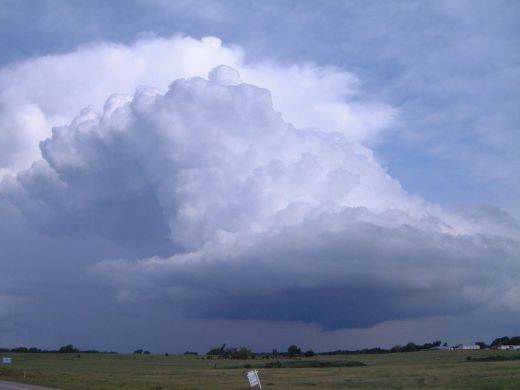
Definition
The troposphere is the lowest layer of the Earth’s atmosphere and plays a crucial role in determining weather conditions. It is approximately 75% of the total mass of the atmosphere. Additionally, the troposphere contains about 99% of the total mass of atmospheric aerosols and water vapor.
Derived from the ancient Greek language, the word “troposphere” is a combination of two roots – “tropos” meaning turn or change, and “sphere” meaning ball. The troposphere is the layer of gas that closely interacts with the upper layers of the hydrosphere and lithosphere. This interaction leads to a continuous exchange of moisture, heat, and chemical elements.
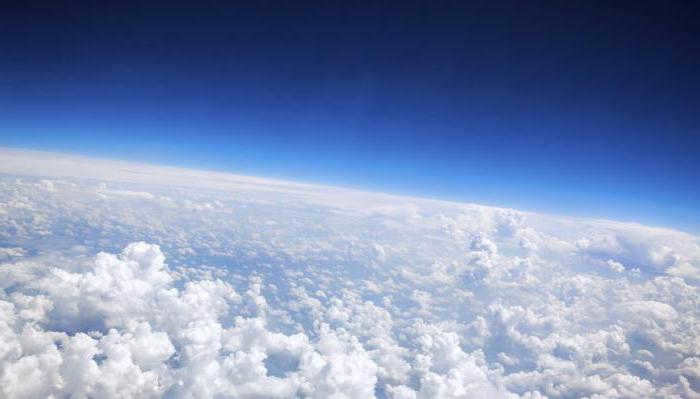
Characteristics
If you want to know what the troposphere is, it is worth noting that its thickness is not consistent. In moderate latitudes, it is less than 17 km, while in tropical regions it reaches 20 km. Near the Earth’s poles, it is no more than 10 km. The lower part of the troposphere is known as the boundary layer, and it can range from a few hundred meters to 2 km in depth.
The troposphere is greatly influenced by air currents on the Earth’s surface, geographical features, and the daily cycle. On average, for every 100 meters of altitude increase within the troposphere, the temperature drops by 0.65 degrees Celsius. The total thickness of the atmosphere does not exceed 25 thousand kilometers.
As the air density decreases, the atmosphere seamlessly transitions into outer space without any distinct demarcation. Simultaneously, the upper limit of the gaseous envelope terminates at an altitude of 20,000 kilometers. The lower limit of the troposphere extends down to the planet’s surface.
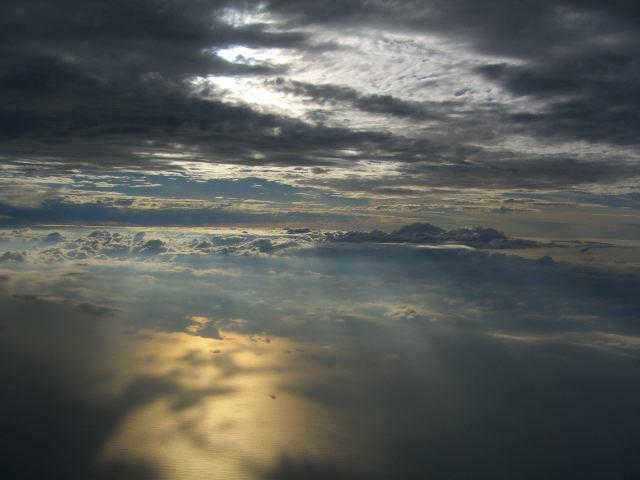
Structure of the troposphere
The troposphere is primarily composed of two key chemical elements, namely nitrogen and oxygen. Nitrogen accounts for approximately 78% of the Earth’s atmospheric composition, while oxygen makes up around 21%. Water vapor, oxygen, and carbon dioxide are vital for supporting life on our planet. Nitrogen cycling plays a crucial role in plant nutrition processes. Additionally, water vapor serves as a significant component that helps regulate temperature levels. It enters the troposphere through evaporation from the surface of the oceans.
The rise of dust from the continents is also a crucial factor for the troposphere. Dust consists of a variety of minerals, salts, spores, and microorganisms. The presence of dust in the atmosphere reduces the Earth’s ability to protect itself from solar radiation.
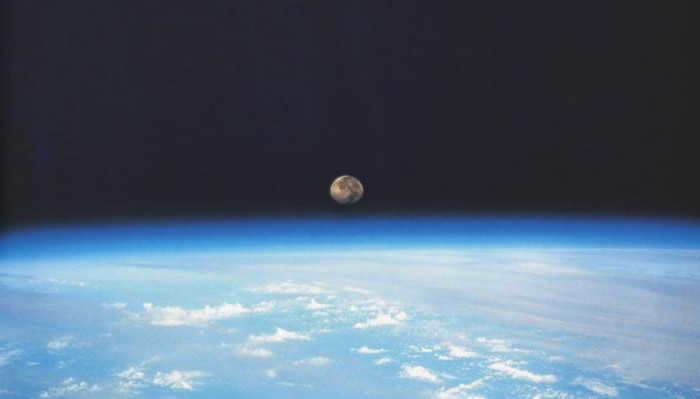
Troposphere Processes
The stratosphere is the layer that follows the troposphere in the Earth’s atmosphere. In addition to the stratosphere, there are other layers such as the mesosphere, exosphere, and thermosphere. However, the most critical layer for supporting life on our planet is the troposphere, specifically its lower portion. These two layers are divided by the tropopause, which is a thin transitional zone where the temperature ceases to decrease in direct proportion to the increase in altitude.
The troposphere, which contains the biosphere and a majority of the atmospheric air, serves as the site for the formation of various cloud types, weather fronts, air masses, cyclones, and anticyclones. The entire system of air currents is situated within this layer. Clouds are created through condensation processes, leading to precipitation in the form of rain, hail, or snow.
Within the troposphere, water undergoes state transitions. The air pressure near the planet’s surface is higher compared to the upper layers. The processes occurring in this atmospheric layer have an impact on climate and weather patterns.
The significance of the Earth’s atmosphere
What is the role of the gaseous envelope surrounding our planet? Firstly, in its lower layer – specifically, the troposphere – all of the Earth’s air reserves are concentrated. These reserves are essential for the respiration of living organisms. The importance of the atmosphere for sustaining life on Earth cannot be overstated – without air, our planet would be uninhabitable, as would other celestial bodies within the solar system. Moreover, the upper part of the gaseous envelope contains the ozone layer, which serves as a protective shield against cosmic influences. This layer prevents dangerous cosmic radiation from reaching the Earth.
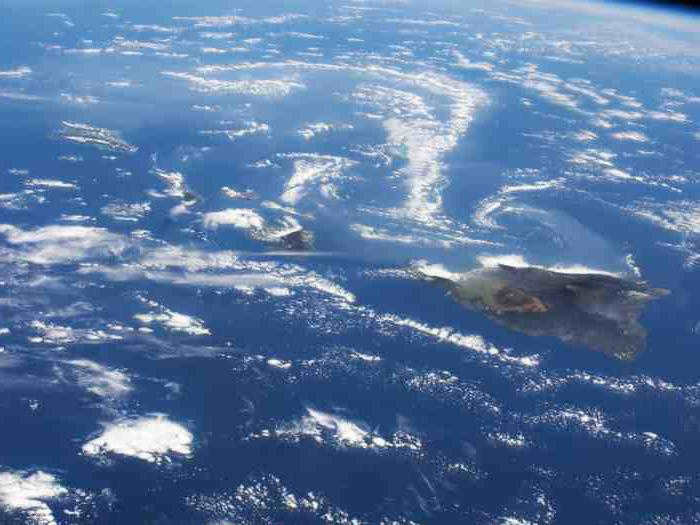
Layer of the Earth’s Surface
For those who are interested in the troposphere, it is essential to understand the characteristics of its lowest layer, known as the terrestrial layer. This stratum contains a significant amount of dust particles and various volatile microorganisms. The terrestrial layer experiences noticeable fluctuations in daily temperatures and air humidity. As one ascends, the wind speed increases. Additionally, the air temperature in this layer changes vertically.
The significance of the troposphere and its surface layer for all life on our planet is well-known, even among schoolchildren. This layer serves as a habitat for all living organisms. The composition and structure of the troposphere’s surface layer are heavily influenced by gases emitted from lithospheric faults and the presence of life itself.
The troposphere is one of the layers of the Earth’s atmosphere. It exerts the most significant influence on the planet and is the most extensively studied by humans. What is the makeup of the troposphere? What characteristics does it possess?
Layers of the atmosphere
The Earth’s gas envelope is referred to as the atmosphere. It appears to surround the Earth. In its lower portion, it interacts with the Earth’s crust and the surface of the hydrosphere, while in the upper portion, it connects with outer space.
The atmosphere moves in conjunction with the planet and is held close by gravitational forces. Its properties, including density, composition, temperature, and humidity, vary at different altitudes. Based on their characteristics, the gas envelope is divided into several regions – layers. What are the layers that form the atmosphere?
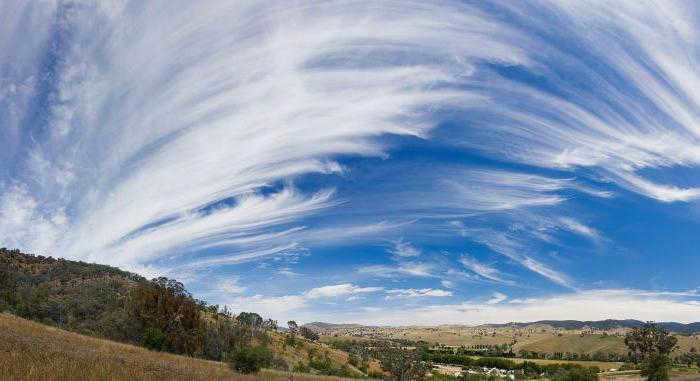
The troposphere serves as the lowest layer of the Earth’s atmosphere, where weather phenomena occur and clouds form. Following the troposphere is the stratosphere, which contains a significant amount of ozone that helps to reduce the harmful effects of ultraviolet radiation. The mesosphere, on the other hand, is known for its extremely cold temperatures, dropping below -90 degrees Celsius.
Spanning from approximately 90 to 500 kilometers above the Earth’s surface, the thermosphere is responsible for the occurrence of the aurora borealis. Due to the abundance of ionized atoms, the mesosphere and thermosphere are collectively referred to as the ionosphere. Lastly, the exosphere, the outermost layer, is highly rarified and lacks a distinct boundary, smoothly merging with the vastness of interplanetary space.
Troposphere
The troposphere is the first layer of the Earth’s atmosphere, starting from its surface. It plays a crucial role in the planet’s overall climate system. The extent of the troposphere varies depending on the Earth’s latitude, with its upper boundary reaching 10 kilometers in polar regions and 18 kilometers in equatorial regions.
The lower section of the troposphere is known as the planetary boundary layer, which has a thickness ranging from one to two kilometers. This region is where the most dynamic interaction between the atmospheric layer and the hydrosphere and solid Earth surface occurs.
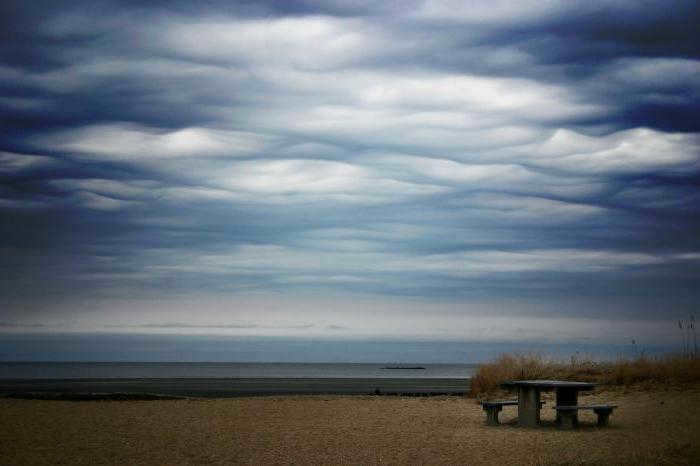
The troposphere and the stratosphere are separated by an intermediate layer called the tropopause, which is typically several hundred meters to two kilometers thick. Unlike the troposphere, the temperature in the tropopause does not vary with height. The height of the tropopause can change, decreasing during cyclones and increasing during anticyclones.
The troposphere is the most significant part of the atmosphere, comprising over 75% of the mass of the gaseous envelope. It contains nearly all of the atmospheric water vapor (98%), while the other layers are mostly devoid of this component.
The lowermost layer, which is at the surface level, contains 99% of the aerosols found in the gaseous envelope. These are small particles that are lifted from the Earth’s surface by air masses, such as dust, smoke molecules, plant spores, and sea salt.
The air in the troposphere is heavily saturated with oxygen and nitrogen, which are crucial for sustaining life on Earth and participate in the natural cycle of substances. Oxygen makes up 21% of the atmosphere’s mass, while nitrogen accounts for 78%.
The troposphere contains a significant amount of argon and carbon dioxide in comparison to other layers. It also consists of small amounts of other atmospheric constituents such as neon, ammonia, xenon, radon, helium, hydrogen, ozone, etc.
Characteristics of the troposphere
The troposphere is characterized by its density, humidity, temperature, and pressure. These physical properties play a crucial role in shaping the climate and weather patterns on Earth. They vary from location to location and from latitude to latitude.
The Earth’s surface, particularly the oceans, collect and transfer solar heat to the atmosphere. As a result, the lower part of the troposphere experiences higher temperatures. Additionally, humidity levels are higher in the lower regions of this layer and decrease as altitude increases. These factors also impact temperature, with a decrease of 0.65 degrees for every hundred meters of ascent until the tropopause is reached.
The density and pressure of the air also decline with increasing altitude. For instance, the pressure at the top of the troposphere is approximately 6-7 times less than at sea level. Density decreases at a slightly slower rate, but the changes are still noticeable.
As the air becomes thinner, the concentration of oxygen and nitrogen per unit volume decreases. This can make breathing more difficult in mountainous regions, and extended stays at high altitudes can result in oxygen deprivation.

Formation of Weather
The troposphere is the layer of the atmosphere that has the most active interaction with the Earth’s surface. Its physical characteristics have an impact on the planet’s weather conditions.
Differences in pressure, density, and temperature result in the movement of air. Cooler and denser air masses tend to move towards areas with lower density and temperature. This leads to the formation of fronts, cyclones, and anticyclones, which play a significant role in determining the weather.
As altitude increases within the troposphere, wind speed also increases. At the boundary of the tropopause, wind speed is three times higher compared to the Earth’s surface. This atmospheric circulation moves in both meridional and latitudinal directions.
